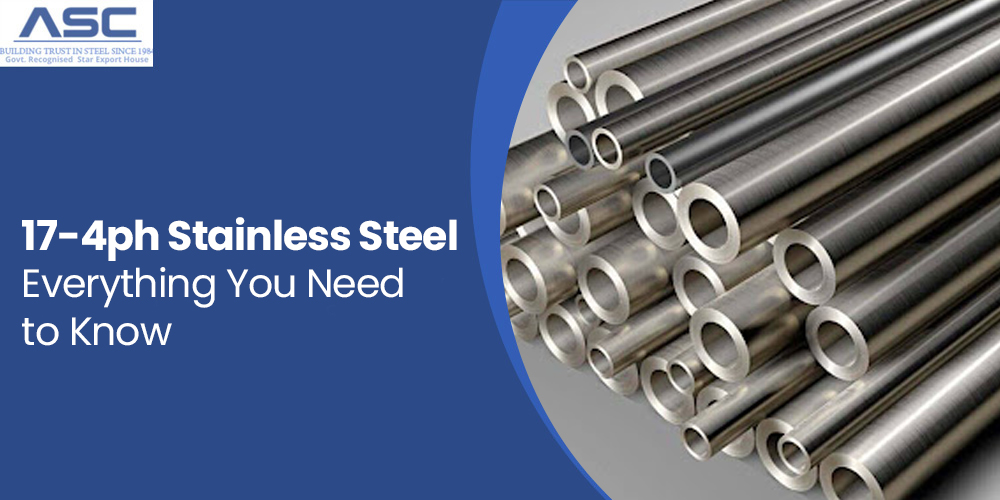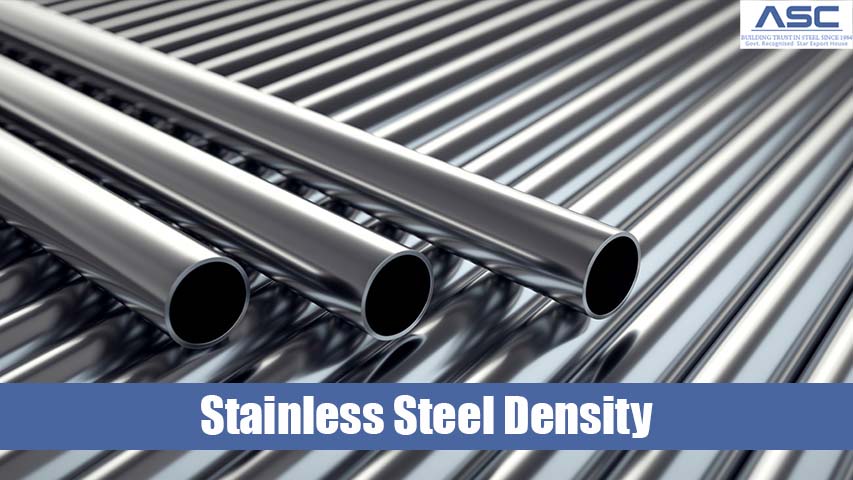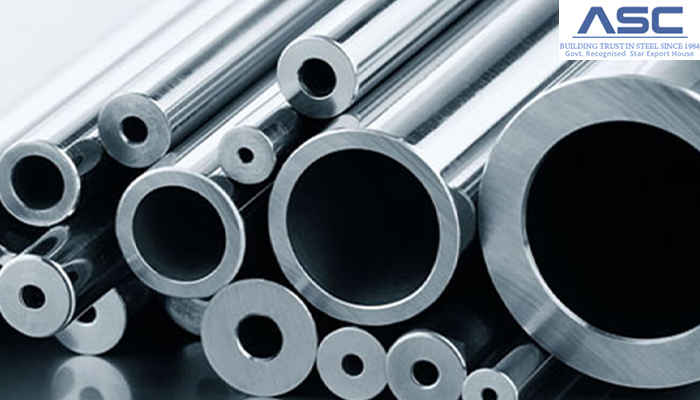17-4ph Stainless Steel - Everything You Need to Know
by AMC
Posted on January 20, 2024 at 03:57 PM

17-4PH, also known as 630 or 1.4542, stands out as one of the most popular stainless chromium-nickel alloy
steels, renowned for its martensitic structure with precipitation hardening and the incorporation of copper.
This alloy is characterized by a remarkable combination of high corrosion resistance and robust strength
properties, including hardness. The precipitation-hardened martensitic structure ensures enduring performance
across various applications.
With a reliable operational range from -29 ℃ to 343 ℃, 17-4PH Stainless Steel demonstrates adaptability while
maintaining consistent performance. This temperature versatility positions it favorably in applications
requiring both strength and corrosion resistance.
Beyond its strength attributes, materials in this grade exhibit commendable ductility. Notably, their
corrosion resistance aligns with that of 1.4301 / X5CrNi18-10, providing a reliable alternative in various
industrial contexts.
With a typical density of 7.75 kg/dm³, 17-4PH Stainless Steel exhibits a balanced weight that contributes to
its versatile applications. Notably, it can be magnetized, adding to its utility in various industrial
scenarios.
17-4PH is strategically chosen for applications where an extraordinary combination of high strength and
moderate corrosion resistance is pivotal. Its unique alloy composition, including precipitation hardening and
the presence of copper, makes it a preferred choice in scenarios that demand exceptional mechanical
properties.
17-4PH Stainless Steel Chemical Composition
| Carbon | Chromium | Columbian + Tantalum | Copper | Manganese | Nickel | Phosphorus | Silicon | Sulfur |
|---|---|---|---|---|---|---|---|---|
| 0.070 Max | 15.0-17.50 | 0.15-0.45 | 3.00-5.00 | 1.00 Max | 3.00-5.00 | 0.040 Max | 1.00 Max | 0.030 Max |
17-4PH Stainless Steel Mechanical Properties
| Material Type | Condition | Ultimate Tensile Strength (PSI) | 0.2% Yield Strength (PSI) | Elongation (% In 2in.) | Reduction Of Area (%) | Hardness Brinell | Hardness Rockwell |
|---|---|---|---|---|---|---|---|
| 17-4 PH | H900 | 190,000 | 170,000 | 10 | 40 | 388 | C40 |
| H1025 | 155,000 | 145,000 | 12 | 45 | 331 | C35 | |
| H1075 | 145,000 | 125,000 | 13 | 45 | 311 | C32 | |
| H1150 | 135,000 | 105,000 | 16 | 50 | 277 | C28 | |
| H1150-M | 115,000 | 75,000 | 18 | 55 | 255 | C24 | |
| H1150-D | 125,000 | 105,000 | 16 | 50 | 255 min – 311 max | C24 – 33 |
A17-4PH Stainless Steel Physical Properties
| Density in kg/dm3 | 7,8 |
| Electrical resistance at 20°C in (Ω mm2)/m | 0,71 |
| Magnetisability | available |
| Thermal conductivity at 20°C in W/(m K) | 16 |
| Specific heat capacity at 20°C in J/(kg K) | 500 |
17-4PH Stainless Steel Grade
| ASTM / AISI | DIN | JIS | GB |
|---|---|---|---|
| 17-4PH, 630 | 1.4542 | SUS630 | 05Cr17Ni4Cu4Nb |
17-4PH Stainless Steel Characteristics
Corrosion Resistance
Comparable to 304 Stainless Steel: The corrosion resistance of Type 17-4PH / 630 aligns closely with that of Type 304 Stainless Steel across most media. Notably, it surpasses the corrosion resistance of the hardenable 400 series stainless steels. For specific recommendations, consult NACE (National Association of Corrosion Engineers).
Heat Resistance
Oxidation Resistance: Grade 630 stainless steels demonstrate commendable resistance to
oxidation,
contributing to their durability in various applications.
Temperature Considerations: Caution is advised against prolonged exposure of grade 630 to
temperatures ranging
from 370 to 480°C to prevent a potential reduction in toughness at ambient temperature. Avoiding usage above
the age-hardening temperature is essential to maintain hardness and mechanical properties.
Heat Treatment
Solution Treatment (Condition A): Grade 630 stainless steels undergo solution treatment at
1040°C for 0.5
hours, followed by air-cooling to 30°C. Alternatively, small sections can be oil-quenched.
Age Hardening: To achieve required mechanical properties, age hardening at low temperatures
is employed.
Superficial discoloration and shrinkage are anticipated during the process, with specific rates for conditions
H1150 and H900.
Welding
Versatile Welding Compatibility: Grade 630 stainless steels exhibit compatibility with all conventional welding methods and do not necessitate pre-heating. Attention to design and welding practices is crucial to mitigate weldment stresses, especially in high-strength steel applications.
Machining
Machinability in Solution-Treated Condition: Grade 630 stainless steels can be machined in their solution-treated condition, with machining rates similar to that of grade 304 steels. This enhances their versatility in various machining applications.
Features of 17-4PH Stainless Steel
Excellent Corrosion Resistance:
Inox 17-4PH alloy stands out with outstanding corrosion resistance, surpassing that of any other hardenable stainless steel. In most scenarios, it matches the corrosion resistance levels of type 304 stainless steel. However, caution is advised, as stress corrosion can occur under high-strength conditions. Adjusting the stabilization temperature becomes essential to counter the risk of stress corrosion cracking.
Application-Specific Corrosion Characteristics:
While susceptible to corrosion and crack corrosion in static seawater, the alloy showcases impeccable corrosion resistance in diverse industries. Notably, in petrochemical, food processing, and paper industries, its corrosion resistance competes with that of grade 304L stainless steel.
Versatile Workability Post Solution Treatment:
In its solution-treated state, 17-4PH embodies the advantageous characteristics of austenitic steel, making it easy to work with. Its versatility extends to achieving high strength through intermediate pressure treatment and aging treatment.
Widespread Applications:
The alloy finds extensive use in critical applications such as pressure vessels, aircraft, and steam turbine blades. Particularly in components that are either in direct contact with the medium or subjected to high stress, 17-4PH excels. For instance, in applications like impellers, where corrosion resistance and mechanical properties are paramount, 17-4PH proves its mettle.
Meeting Rigorous Requirements:
The impeller, operating in direct contact with the medium, demands exceptional corrosion resistance. Simultaneously, the shaft, responsible for driving components like the impeller, requires superior strength and toughness to handle significant forces. 17-4PH emerges as the material of choice, as it seamlessly meets both the corrosion resistance and mechanical property requirements, ensuring optimal performance in demanding applications.
Applications of 17-4PH Stainless Steel
- Offshore Platforms and Helicopter Decks: Ideal for harsh marine environments, 17-4PH is employed in the construction of offshore platforms, including helicopter decks and various other maritime platforms.
- Food Industry: Recognized for its corrosion resistance, 17-4PH is utilized in the food industry, ensuring durability and hygiene in critical components.
- Pulp and Paper Industry: In the pulp and paper industry, where resistance to corrosion and wear is essential, 17-4PH finds application in various components, contributing to the longevity of machinery.
- Aerospace (Turbine Blades): Critical aerospace components, particularly turbine blades, benefit from the high strength and corrosion resistance of 17-4PH, ensuring optimal performance under demanding conditions.
- Mechanical Components: In diverse mechanical applications, 17-4PH is preferred for its ability to offer a unique combination of strength, toughness, and corrosion resistance.
- Nuclear Waste Barrels: The corrosion resistance and durability of 17-4PH make it suitable for use in nuclear waste barrels, ensuring the integrity of containment over extended periods.
- Surgical Instruments: Precision and corrosion resistance are vital in surgical instruments. 17-4PH's characteristics make it a reliable choice for crafting durable and corrosion-resistant surgical tools.
- Other Applications: The versatility of 17-4PH extends to various other applications, showcasing its adaptability in different industrial and technological settings.
Conclusion
In conclusion, 17-4PH stainless steel, with its precipitation-hardening martensitic structure and unique alloy
composition, stands as a versatile material with a wide array of applications. Its excellent corrosion
resistance, superior strength, and compatibility with various industries make it a preferred choice in
critical environments.
From offshore platforms and aerospace components to the demanding realms of the food industry and surgical
instruments, 17-4PH consistently delivers exceptional performance. The alloy's ability to withstand corrosive
forces, coupled with its ease of workability post-solution treatment, positions it as a reliable solution in
diverse sectors.
As we navigate the intricacies of applications like nuclear waste barrels and mechanical components, the
robust characteristics of 17-4PH prove indispensable. The alloy's presence in helicopter decks, pulp and paper
machinery, and the aerospace sector, particularly in turbine blades, highlights its adaptability to extreme
conditions.
In essence, 17-4PH stainless steel has etched its mark as a material that seamlessly combines strength,
corrosion resistance, and workability. Whether beneath the ocean waves or in the vast expanse of aerospace,
17-4PH continues to prove its mettle, contributing to the resilience and efficiency of various industrial
processes and critical applications.

Stainless Steel Density
The term "density" generally refers to the concentration of something within a particular area or space. For example, if we say that an area is densely populated, it means that many people live within that specific region.
.jpg)
